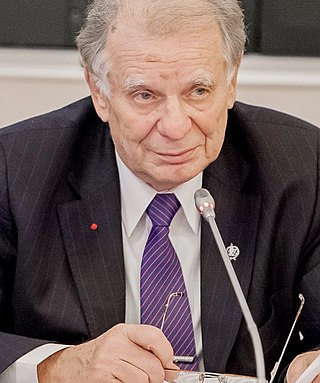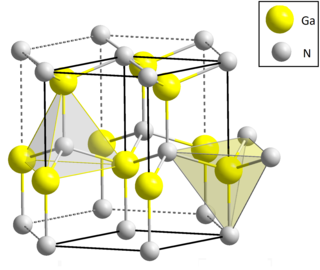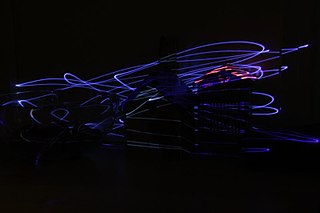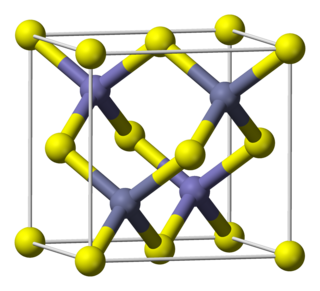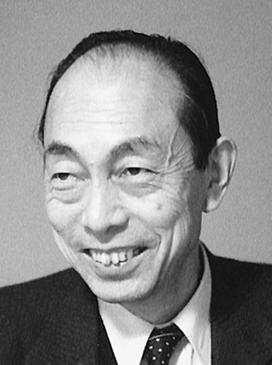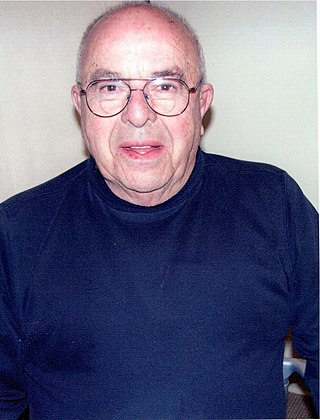Early life and education
Morton Panish was born in Brooklyn on April 8, 1929 to Isidore Panish and Fanny Panish (née Glasser) and grew up in Brooklyn. [1] [2] At the age of 12, he was strongly influenced by a book called Microbe Hunters by Paul de Kruif, which left him with the impression that a scientific career is exciting. He went to Erasmus Hall High School, where he was fascinated by a chemistry substitute teacher's description of his Ph.D. work at Columbia University, which involved synthesizing new organic compounds. He graduated in 1947, attended Brooklyn College for two years and then transferred to the University of Denver. He graduated in 1950. He met his future wife, Evelyn Chaim, in a chemistry class shortly after arriving in Denver. They married during his first year in graduate school.
Panish enrolled in graduate school at Michigan State University, majoring in physical chemistry and minoring in organic chemistry. His master's thesis involved a "series of measurements of the electric dipole behavior of some organic compounds," and he did not consider it very challenging. [3] His advisor was Max Rogers, a Canadian and former student of Linus Pauling, and Rogers supervised his Ph.D. work as well, which was on interhalogen compounds. Used to process reactor fuels, these compounds are highly reactive and dangerous, and after Panish had completed his experiments, another student was badly injured in an explosion. He resolved to work with less dangerous materials in future. [3]
Career
From 1954 to 1957 Panish worked for Oak Ridge National Laboratory in Tennessee, studying the chemical thermodynamics of molten salts, then he moved to Massachusetts and worked in the Research and Advanced Development Division of AVCO Corporation. The primary contract of this division, with the United States Air Force, was to develop vehicles for the reentry of thermonuclear weapons into the atmosphere. Panish was unwilling to do this work, but the government allotted 5% of the budget to basic research. From 1957 to 1964 he worked on the chemical thermodynamics of refractory compounds, but then decided to leave because the government terminated the funding for basic research. [2] [3]
Before the Oak Ridge job, Panish had applied to Bell Labs and been rejected, but now they hired him. He started work in June 1964 in the Solid State Electronics Research Laboratory, a group headed by physicist John Galt. He was part of a department working on III-V semiconductors, compounds in which elements from group III and group V of the periodic table are combined, for example, gallium arsenide (GaAs). He planned a series of experiments to determine the phase diagrams among solid solutions of the various III-V compounds and to look into controlling the impurity elements that determine the electrical properties of those semiconductors. [3]
In 1966, Galt asked Panish and Izuo Hayashi, a physicist from Japan, to investigate a problem involving laser diodes. The first such lasers, also known as injection lasers, were developed independently in 1962 by General Electric groups in Syracuse and Schenectady as well as the Thomas J. Watson Research Center of IBM and the MIT Lincoln Laboratory. [4] These early lasers, mostly made out of a single chunk of GaAs, required high current densities to operate, so they could only run continuously at very low temperatures; at room temperature, they could only operate for a fraction of a second. For them to be used in a practical communications system, they would need to operate continuously at room temperature. [3]
A solution to the problem was proposed theoretically by Herbert Kroemer in 1963 – a double heterojunction laser but Kroemer failed to suggest that a suitable (lattice matched) combination of III-V semiconductors would be needed to provide ideal interfaces between the III-V compounds with their different bandgaps. The combination of such materials used for the first CW lasers was GaAs (Gallium Arsenide) and Aluminum Gallium Arsenide, which have the same lattice parameter. The idea was to place a material like GaAs, with a smaller band gap, between two layers of a material such as aluminum gallium arsenide (a solid solution of AlAs and GaAs) that had a larger band gap; this confined the charge carriers and the optical field (the light) to this layer, reducing the current needed for lasing. [5] : 151 Panish and Izuo Hayashi independently developed the single heterostructure laser first and then the double heterostructure laser. However, publication of the announcement of the first room temperature continuously operating double heterostructure laser was by Zhores Alferov in 1970 one month before Hayashi and Panish published similar results. Although there was some degree of contact between the group in Leningrad and the group in New Jersey including a visit by Alferov to the New Jersey lab, and a visit by Panish and Hayashi to Alferov’s lab in Leningrad, the two achievements were obtained independently. Panish experimented with making wafers using a new form of liquid-phase epitaxy while Hayashi tested the laser properties. Panish and Hayashi observed what they thought might be CW operation in several wafers in the weeks before their final demonstration. That had to await a laser that lived long enough for a complete plot of the lasing spectrum to be achieved. Over the Memorial Day weekend in 1970, while Panish was at home, Hayashi tried a diode and it emitted a continuous-wave beam with just over 24 degrees Celsius and he was able to plot the complete spectrum with the very slow equipment available at the time.
Room-temperature lasers were soon duplicated at RCA Laboratories, Standard Telecommunication Laboratories and Nippon Electric Corporation (NEC). Over the next few years, the lasers became longer-lasting and more reliable. At Bell Labs, the job of creating a practical device was given to Barney DeLoach. But in January 1973, they told him to cease all work on the problem. As he recalled, their view was "We've already got air, we've already got copper. Who needs a new medium?" [5] : 157
The continuous wave semiconductor laser led directly to the light sources in fiber-optic communication, laser printers, barcode readers and optical disc drives, but it was mostly Japanese entrepreneurs, not AT&T, that ended up profiting from these technologies. [6] : 252 [7] The Japanese success was enhanced by Panish’s ex-partner Izuo Hayashi who had returned to Japan.
After the work on double heterostructure lasers Panish continued to demonstrate variants of the laser structures with other collaborators in work done through the late 1970s, but the major thrust of his work for the rest of his career, until 1992, was to exploit the new opportunities presented by the use of Molecular Beam Epitaxy to produce lattice matched semiconductor heterostructures in III-V systems other than GaAs-AlGaAs for other devices (detectors, quantum well physics and devices, ultra fast hererostructure transistors) and for the study of the physics of small layered structures.
